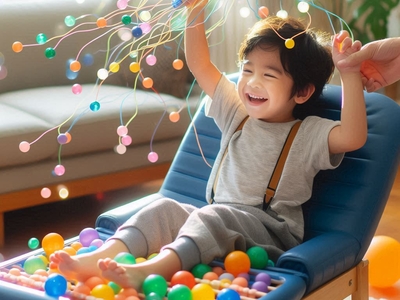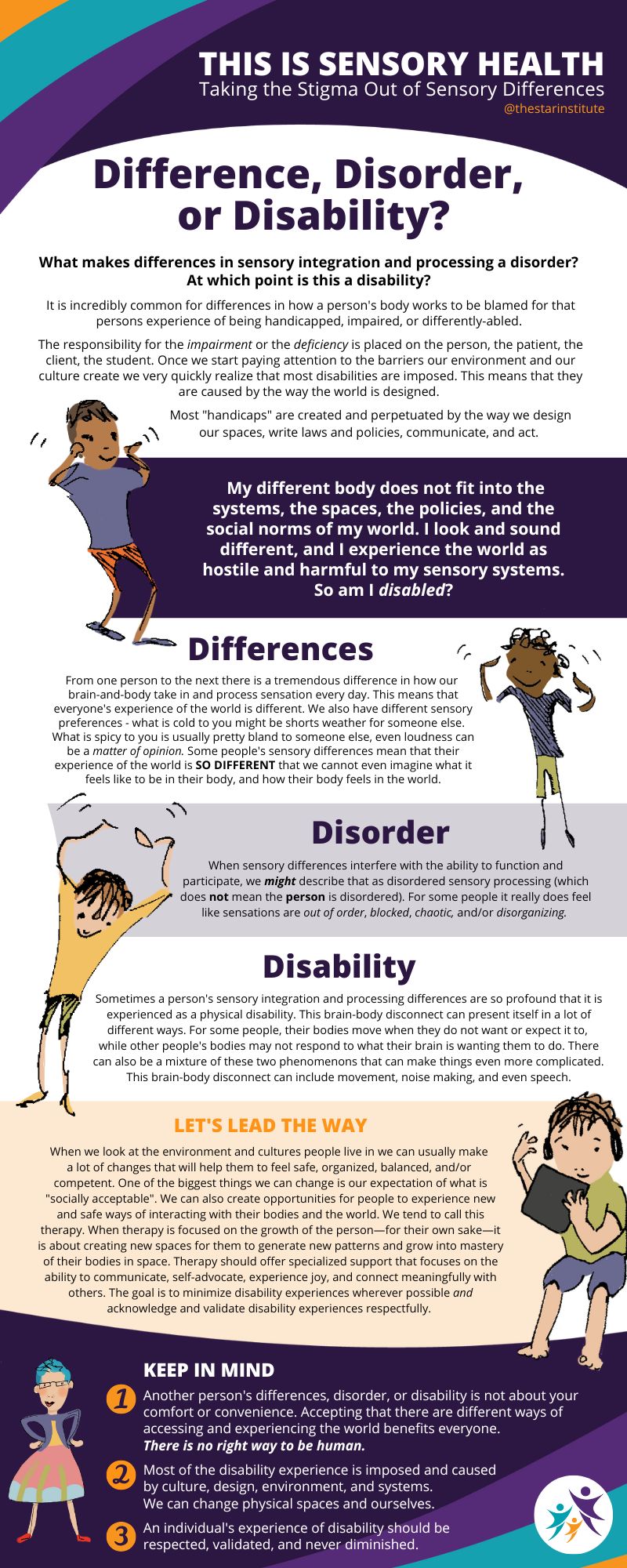What Happened to Sensory Processing Disorder (SPD)?

Sensory Processing Disorder in 2025 and Beyond
In recent years, the conversation around neurodiversity has grown significantly, bringing increased understanding of various neurodivergent populations. Amid this progress, a misconception has emerged: that Sensory Processing Disorder (SPD) has faded into the background. Let’s clarify: SPD is a real, empirically researched phenomenon that remains relevant and significant, especially in the broader context of neurodiversity.
|
Neurodiversity |
The belief that all brains are different and that divergent ways of processing and experiencing the world are natural and to be celebrated. We are all neurodiverse. |
SPD exists as a neurotype of its own and often co-occurs in other neurodivergent populations. Research indicates that 80-90% or more of autistic individuals experience sensory integration and processing challenges. Additionally, SPD is highly prevalent among the Attention Deficit Hyperactivity Disorder (ADHD) population. This intersectionality underscores the importance of understanding sensory processing differences as integral to the neurodiversity-affirming movement. Did I say integral? I meant not optional.
Disability, Disorder, or Difference? 
As our understanding of sensory integration and processing evolves, so does the language we use to discuss it. At STAR Institute, we recognize the importance of moving away from pathology-focused terminology like “disorder” and embracing terms that reflect the diversity and complexity of humans. Instead of starting from a place where sensory processing differences are a “deficit,” we’re adopting terms that reflect nuance and context; terms like “sensory health,” and “sensory integration differences.” These terms honor the individuality and lived experiences of those in the sensory community while fostering a more inclusive and affirming dialogue.
Sensory processing differences vary significantly from person to person, shaping unique experiences of the world. Individual sensory preferences mean that sensations like cold or spicy genuinely “feel” very different from one person to the next, leading to a spectrum of sensory differences that may be unimaginable to others.
When the environment is unsupportive of sensory differences and this hinders daily functioning, we might classify this as disordered sensory processing. Using the term “disorder” here does not imply that the individual is disordered; rather, it reflects the chaotic and disorganized nature of their sensory experiences.
In some cases, profound sensory integration challenges manifest as a physical disability, resulting in a disconnect between the brain and body. This disconnect can lead to unexpected movements, difficulty in responding to sensory input, or challenges in communication, complicating the individual’s interactions with their environment. It would be a kind of erasure to insist that this group of people are experiencing anything other than a disability.
SPD as a Neurotype
“We use the term neurodivergence as a means of moving away from the deficit narrative, not as a synonym for disorder. We need to ensure that our language and practices consistently reflect this understanding, promoting acceptance and valuing diverse neurological experiences without reverting to ableist or deficit-focused terminology.”
STAR is deeply and totally committed to the neurodiversity-affirming movement, but that does not mean STAR Institute is moving away from SPD or the SPD community. On the contrary, we remain steadfast in our commitment to supporting individuals with sensory processing challenges. Our goal is to build, connect, and support the sensory community in ways that reflect the evolving understanding of neurodiversity. By adopting language that emphasizes ability and inclusion, we aim to strengthen the connection between sensory health and neurodiversity, bridging gaps and fostering a sense of belonging for all.
The SPD Community
The community that identifies with the SPD neurotype is vibrant and deserves recognition and support. Individuals with SPD navigate the world through unique sensory experiences that significantly impact their daily lives. Unfortunately, many children with SPD are still viewed through a purely behavioral lens, leading to misunderstandings about their sensory needs. This perspective often overlooks the effort they put into managing (or adapting to) their sensory experiences, resulting in negative interpretations of their behavior. Such misinterpretations are damaging, affecting self-esteem and identity.
How we perceive and support those with sensory differences must change. Recognizing individuals within their context—and acknowledging how culture and environment shape their experiences—validates their efforts and fosters a sense of belonging. This affirmation is critical for building confidence and resilience within the sensory community.
“Different is normal and “normal” is a setting on a washing machine.”
Building an Inclusive Future
Support for individuals with sensory differences must come from multiple avenues, including therapy, education, and research. It is essential to create environments where sensory needs are understood and accommodated—benefiting not only individuals with SPD but everyone. Educators, caregivers, and therapists play pivotal roles in learning about sensory differences and implementing strategies that honor these unique needs. By doing so, we empower individuals and cultivate a society that respects and celebrates neurodiversity.
TL:DR
Sensory Processing Disorder has not gone anywhere; it remains a vital aspect of the neurodiversity conversation. By acknowledging SPD as a valid and distinct experience, we can better support individuals within this community. At STAR Institute, we are committed to evolving our language to reflect a more inclusive and affirming perspective. Together, we can promote a deeper understanding of sensory health and neurodiversity, ensuring that every person feels seen, valued, and understood.
